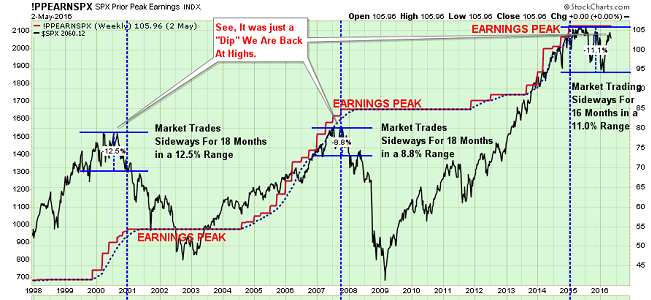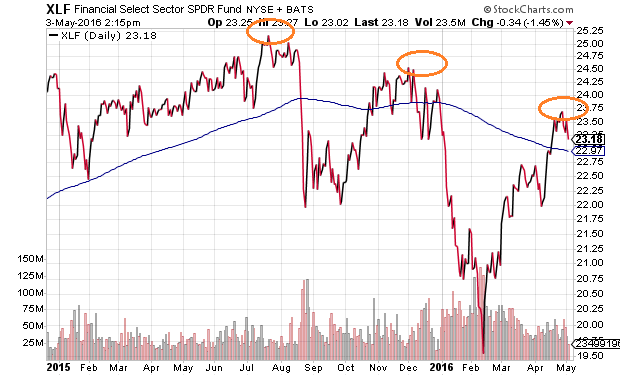For those who have paid attention, the last actual bond purchase by the Federal Reserve occurred on December 18, 2014. Why does the date matter? For one thing, research demonstrated that the expansion and manipulation of the Fezd’s balance sheet (i.e., QE1, QE2, Operation Twist, QE3) corresponded to 93% of the current bull market’s gains. 93%! Secondly, stocks have struggled to make any tangible progress since the central bank of the United States ended six years of unconventional monetary policy intervention roughly 18 months ago.

If you subscribe to the notion that the Fed’s balance sheet is – for all purposes and intents – the primary driver for asset price inflation, you probably have a substantial money market position already. Perhaps you have moved 20%, 25% or 30% to cash or cash equivalents. On the other hand, if you simply believe that low interest rates alone “justify” exorbitant valuation premiums, you may be content to ride out any volatility in an aggressive mix of stocks of all sizes and higher-yielding instruments.
Myself? I believe that recent history (20-plus years) as well as long-term historical data (100-plus years) favor a defensive posture. For instance, in the 20-year period between 1936-1955, there were four stock bears with 20%-40% price depreciation and ultra-low borrowing costs near where they are today. Interest rate excuses notwithstanding, every prior historical moment where there were similar extremes in stock valuations – 1901, 1906, 1929, 1938, 1973, 2000, 2007, stocks lost more than 40% from the top.
There’s more. Since the mid-1990s, peak earnings have been associated with eventual market downfalls.
Near the end of 2000, the S&P 500 traded sideways for nearly a year-and-a-half; shortly thereafter, the popular benchmark collapsed for a top-to-bottom decline of 50%. In the same vein, the S&P 500 had been in the process of trading sideways for approximately 18 months near the end of 2007; thereafter, U.S. stocks lost half of their value alongside a peak in corporate profits. With corporate profits having peaked near the tail end of 2014, and with the S&P 500 range-bound since the tail end of 2014, is it reasonable to suspect that history might rhyme?

In light of what we know about valuations and corporate debt levels, bullishness on markets moving meaningfully higher would depend heavily on three items: (1) Profits per share must improve in the 2nd half of 2016 alongside stability in oil as well as improvement in the global economy, (2) Corporations must continue to borrow at low rates to finance the purchase of stock shares that pensions, retail investors, hedge funds and institutional advisers are unlikely to acquire, and (3) Corporations must have the access to borrowed dollars in an environment where lenders do not choose to tighten their standards. On the first point, there have been exceptionally modest signs that the euro-zone economy is picking up marginally. On the flip side, emerging market economies, particularly China and Brazil, are still deteriorating, while Japan appears to be coming apart at the seams. The net result? I expect a wash. It is difficult to imagine genuine profitability gains based on a global economic backdrop as murky as the one we have at present.
That said, companies will still want to enhance their bottom lines. The only way that they’ve been able to do it since the 3rd quarter of 2014? Borrow money at low rates, then acquire stock to lower the number of shares in existence. Not only does the activity boost earnings per share (EPS) when there are fewer shares, but the reduction in supply makes shares more scarce. Scarcity can artificially boost demand.
However, what would happen if it became more difficult for corporations to tap the bond market to finance buyback desires? Indeed, we may be seeing the earliest signs already. Consider a reality that the most recent data on commercial and industrial loans (C&I Loans Q4 2015) revealed where lending standards tightened for the third consecutive quarter. Some research has even shown that when there are two consecutive quarters of tighter lending standards, the probability of recession and/or a significant default cycle increases dramatically. (And we just experienced three consecutive quarters.)

It is equally disconcerting to see how this has played out for financial stocks where banks tend to be exposed to “undesirable” debts. There’s no doubt that Financial Select Sector SPDR (NYSE:XLF) had a monster bounce off of the February 11 lows. On the other hand, the downward slope of the long-term moving average (200-day) coupled with an inability to gain genuine traction over the prior nine months is unhealthy. The same concerns exist in European financial companies via iShares MSCI Europe Financials (NASDAQ:EUFN).


One thing appears certain. With respect to the stock market itself, quantitative easing (QE), zero percent rate policy (ZIRP) and negative interest rate policy (NIRP) primarily enticed companies to act aggressively in the purchase of additional stock. “Mom-n-pop” retail? They’re not biting. Neither are pensions, “hedgies,” money managers or other institutional players. Only the corporations themselves. So what would happen if corporations – entities that have already doubled their total debt levels since the end of the Great Recession – significantly slowed their borrowing?
Don’t discount it! Executives may already be growing wary about their corporate debt levels; they may already be troubled by the underperformance of stock shares after having spent billions on buybacks. In fact, a borrowing slowdown could occur because access to credit becomes more difficult.
Personally, I recognize that the Fed is unwilling to sit on its backside if a bearish downtrend escalates. In fact, I have already laid out the scenario as I anticipate it occurring; that is, we travel from 4 rate hikes in 2016, to 2 rate hikes to no rate hikes to QE4. Some do not believe that a fourth iteration of quantitative easing would stop a bear in its tracks, but I think it could reflate assets significantly. (And that’s not an endorsement of QE, only a recognition of its success at fostering indiscriminate risk taking in the current cycle.)
On the flip side, I cannot say when the Fed will resort to QE4. Most likely? They’d hint at a shock-n-awe policy action near 1705 on the S&P 500.
Until the Fed gives financial speculators what they want, though, I plan to maintain an asset mix for clients that is more defensive than usual. COuld you have any exposure to Vanguard Total Market (VTI)? Sure. Nevertheless, you’ll need 25% in cash/cash equivalents to take advantage of a bear-like mauling.
Disclosure: Gary Gordon, MS, CFP is the president of Pacific Park Financial, Inc., a Registered Investment Adviser with the SEC. Gary Gordon, Pacific Park Financial, Inc, and/or its clients may hold positions in the ETFs, mutual funds, and/or any investment asset mentioned above. The commentary does not constitute individualized investment advice. The opinions offered herein are not personalized recommendations to buy, sell or hold securities. At times, issuers of exchange-traded products compensate Pacific Park Financial, Inc. or its subsidiaries for advertising at the ETF Expert web site. ETF Expert content is created independently of any advertising relationships.
